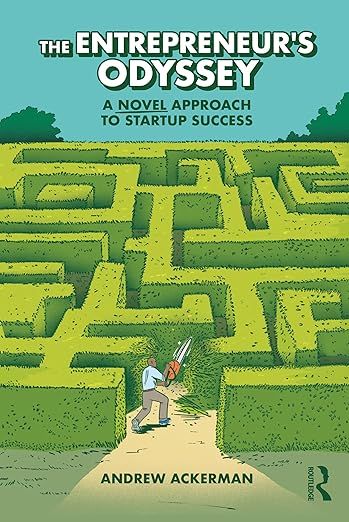Lovable Credit Hacks: How to Ship More While Spending Less

If you’ve ever watched your Lovable credits vanish mid-build, you’re not alone. The platform is powerful, but every prompt costs. The good news: with a few workflow tweaks, you can cut burn, ship faster, and keep your budget sane.
TL;DR
- Plan outside Lovable. Enter with clarity, not curiosity.
- Prompt elsewhere first. Paste only the tight, final brief into Lovable.
- Build in slices. Generate small changes, not sweeping overhauls.
- Reuse what works. Clone prior successes and import code.
- Keep a credits dashboard (simple spreadsheet) so you spot leaks fast.
Table of Contents
- How Lovable Credits Actually Work
- Hidden Credit Traps (and how to avoid them)
- The 9 Best Credit-Saver Habits
- Free and Cheap Alternatives to Offload Work
- Upgrade Math: When Paying More Is Cheaper
- Mini SOP: “One-Credit” Prompting Flow
- FAQ
1) How Lovable Credits Actually Work
Lovable is subscription-based and uses credits for your AI “messages.” Free gives you 5 daily credits with a monthly cap; paid tiers add larger monthly pools. Exact numbers change over time, so always check the current “Plans and credits” and “Pricing” pages for the freshest limits.
Community threads also discuss recent tweaks to how many credits a single action can consume (e.g., more complex generations charging multiple credits), so don’t assume “1 message = 1 credit” for everything anymore.
2) Hidden Credit Traps (and How to Avoid Them)
- Vague prompts → multiple “clarify-and-regenerate” cycles. Fix with a tight spec up front.
- Big-bang changes → Lovable may rework large chunks of the app. Break requests into smaller, testable steps.
- Bug-fix loops → burning credits chasing the same issue. Compare to working patterns in your project before asking Lovable to “try again.”
- Unknown plan limits → surprise caps or rollovers. Re-check current plan specifics before a sprint.
3) The 9 Best Credit‑Saver Habits
- Refine prompts elsewhere first
- Draft in ChatGPT or Claude, then paste the final brief into Lovable. You’ll cut “iterate in the editor” spend dramatically. Reddit builders echo this: plan features first, then execute.
- Micro-prompts, not mega-prompts
- Ask for one specific change at a time: “Add email/password auth with Supabase and redirect to /dashboard on success,” then test. This avoids broad refactors that can cost multiple credits.
- Reuse and remix
- Clone a prior project or copy over working components. Why pay to regenerate a table, modal, or auth flow you already shipped? Communities highlight shipping full apps on modest credit totals by planning and reusing.
- Export minimal, expand locally
- Generate the scaffold you need, export the code, and continue iterating in your IDE. Save credits for the tricky bits Lovable is best at. Official docs make exporting and getting started straightforward.
- Pre-flight checklists
- Before you spend credits, write: goals, routes, entities, schema, edge cases, acceptance criteria. The more precise your acceptance criteria, the fewer re-runs. Reddit “tips” posts stress this planning step.
- Design outside the tool
- Wireframe in Figma or even pen-and-paper. Enter Lovable with a locked layout and copy. That’s fewer UI rewrites.
- Copy known-good patterns
- If you’ve already got an upload form working elsewhere in your app, point Lovable to it and request “replicate this pattern for X.” This avoids wasteful back-and-forth.
- Use credits for leverage, not exploration
- Do research, architecture choices, and API spelunking outside Lovable. Spend credits when the builder can accelerate you 10× on implementation.
- Track your burn
- A tiny spreadsheet with date, prompt, goal, result, credits spent will reveal patterns: which requests are “expensive,” which prompts routinely fail, and when you should switch strategies.
4) Free and Cheap Alternatives to Offload Work
When you’re low on credits, offload work to free or low-cost tools, then bring the results back to Lovable only for glue code.
- Architecture & copy: ChatGPT Free/Plus, Claude Free
- API scaffolding & docs: Vendor docs; Postman collections
- Open-source or cheaper options for parts of the stack: there are blog roundups comparing free limits and alternatives, plus write‑ups on maximizing Lovable’s free tier. Use these to split workloads intelligently.
5) Upgrade Math: When Paying More Is Cheaper
If you’re repeatedly hitting limits, an upgrade can cost less than nickel‑and‑diming restarts. Pricing pages and reviews outline plan tiers and real‑world outcomes; some devs report strong ROI even at a few hundred credits used on serious builds. Weigh the cost of runway vs. time-to-market.
6) Mini SOP: “One‑Credit” Prompting Flow
- Outside Lovable: Write a 5‑part brief
- Goal, inputs/outputs, acceptance criteria, routes, data model.
- Inside Lovable: Issue a single, narrow request
- “Create a protected /dashboard page that shows the user’s 5 latest orders from the Orders table with status badges.”
- Test immediately
- If it’s off, correct with one precise follow‑up, not a broad “improve everything.”
- Commit or export
- Lock in what works. Expand locally or repeat with the next tiny feature.
This “thin-slice” loop mirrors what Reddit builders describe when they ship apps in a few dozen credits.
7) FAQ
Q1) Why did one request eat multiple credits?
Complex generations can cost more than a single credit now, depending on scope. Keep requests narrow.
Q2) Do free daily credits stack with paid monthly credits?
Plan details evolve; check the live “Plans and credits” page and the Pricing page for current allowances and rollovers.
Q3) Is Lovable worth paying for if I’m careful?
Plenty of builders report high ROI when they plan tightly and ship in slices. Case threads show apps shipped in ~15–40 credits with good prep.
Q4) I’m burning credits on bug fixes—what now?
Before asking Lovable to “fix,” compare against a known-working component in the same repo and ask it to mirror that pattern. If loops continue, export and fix locally, then resume small Lovable changes.
Q5) Where can I monitor changes to pricing/credits?
Bookmark and periodically check the official docs and pricing pages; media and tool blogs also post practical breakdowns and comparisons.
Final Take
Lovable’s power multiplies when you treat credits as a scarce resource. Plan in the free world, build in small steps, reuse what’s proven, and spend credits where Lovable gives you true lift. Follow that playbook and you’ll ship more, stress less, and keep the credit meter from owning your roadmap.















